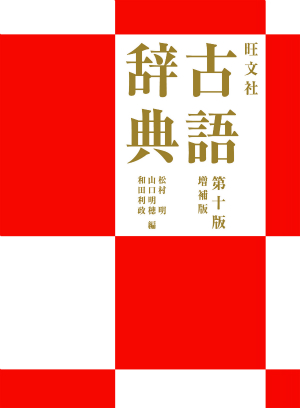
Utagawa Kunisada (1847)
A stunningly handsome and keenly intelligent prince, a monstrous senior cat that devours humans, or a hellacious wind that blows away an entire village, classical Japanese literature offers many thrilling tales, sublime poetry, and illuminating texts. This research guide provides resources for literary Japanese (bungo or kobun), classical literature, and calligraphy (kuzushiji).
On this page, you will resources that complement JAPN 4109: Introduction to Bungo, Literary Japanese, a course offered by the Department of East Asian Languages and Literatures here at GW. These resources include dictionaries and encyclopedias, reference materials, and helpful websites for language learning.
The "Literature, Texts, and Research" tab includes resources for discovering, researching, and analyzing literary texts. These resources include dictionaries and encyclopedias, databases, websites, and digital humanities projects both in Japanese and English. This page also provides materials relavent to JAPN 4109: Introduction to Bungo, Literary Japanese and other related literature, film, and history courses.
Finally, the "Kanbun and Kuzushiji" tab provides websites, apps, and reference materials for initial study of Japaneses calligraphy, Sinitic Japanese, and hentaigana. While this falls outside of the scope of coursework offered at GW, it is a starting point for further exploration and primary document research.
Please note that for the purpose of the research guide, "classical" is operationalized in such a way to include traditional texts, ranging from ancient to medieval, although there are some inclusions of early modern and modern works as bungo was used until the Showa Era. In their own work, users should be discerning with how these terms are used and applied.
This section includes both online and print dictionaries of ancient language. The first entries are websites, Kotobank and Weblio, which are in Japanese. Weblio is specifically dedicated to classical Japanese language and terminology; Kotobank contains modern words with entries that contain information about classical usage. The print dictionaries may be found either 1) in the Global Resources Center (GRC) here at GW or 2) requested via the Washington Research Library Consortium (WRLC). Simple click the link, which will take to the catalog entry, and request the item from the consortium. The book should arrive in about 1-3 days. Students in the WRLC may also physically visit consortium libraries by presenting their university identification card.
 角川古語大辞典 Kadokawa kogo dai jiten [The Great Dictionary of Archaic Japanese]
by
角川古語大辞典 Kadokawa kogo dai jiten [The Great Dictionary of Archaic Japanese]
by
 古語大辞典 , Kogo daijiten [Ancient Language Dictionary]
by
古語大辞典 , Kogo daijiten [Ancient Language Dictionary]
by
 岩波古語辞典 [Iwanami dictionary of archaic words]
by
岩波古語辞典 [Iwanami dictionary of archaic words]
by
 旺文社全訳古語辞典, Ōbunsha zen'yaku kogo jiten [Obunsha Complete Translation Ancient Japanese Dictionary]
by
旺文社全訳古語辞典, Ōbunsha zen'yaku kogo jiten [Obunsha Complete Translation Ancient Japanese Dictionary]
by
 旺文社古語辞典, Ōbunsha kogo jiten [Obunsha Complete Translation Ancient Japanese Dictionary]
by
旺文社古語辞典, Ōbunsha kogo jiten [Obunsha Complete Translation Ancient Japanese Dictionary]
by
 枕詞辞典, Makurakotoba jiten [Dictionary of pillow words]
by
枕詞辞典, Makurakotoba jiten [Dictionary of pillow words]
by
These websites provide a good, informal look into bungo and kobun for those just getting started. While not considered scholars, these creators publish accessible pages present information a way that is straightforward and convenient. Users should consult these sites in conjunction with using authoritative reference materials, texts, and sites.
Now a standard textbook set in bungo study, Haruo Shirane's Classical Japanese Reader and Essential Dictionary and Classical Japanese: A Grammar are two books used in JAPN 4109: Introduction to Bungo, Literary Japanese here at GW. Helen McCullough and John Wixted's manuals are essential companions to the Shirane texts.
 Bungo manual : selected reference materials for students of classical Japanese
by
Bungo manual : selected reference materials for students of classical Japanese
by
 Dictionary of Selected Forms in Classical Japanese Literature
by
Dictionary of Selected Forms in Classical Japanese Literature
by
 Classical Japanese: a grammar
by
Classical Japanese: a grammar
by
 Classical Japanese reader and essential dictionary
by
Classical Japanese reader and essential dictionary
by
 A reference grammar of classical Japanese prose
by
A reference grammar of classical Japanese prose
by
 A Handbook to classical Japanese = [Bungo handobukku]
by
A Handbook to classical Japanese = [Bungo handobukku]
by